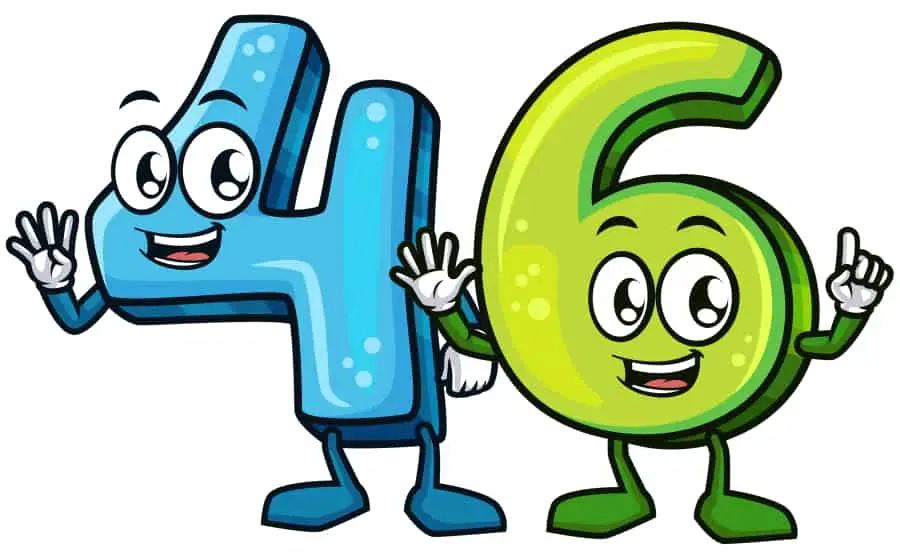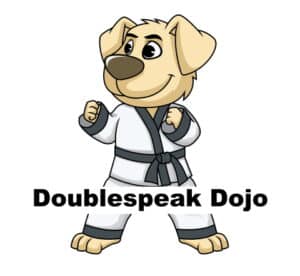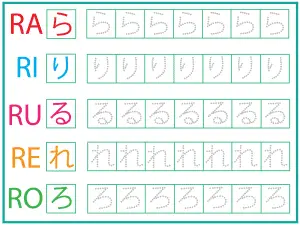Students of Japanese and even fans of Japanese culture and entertainment become fascinated with their writing styles. The three main categories of writing in Japanese consists of Hiragana, Katakana, and Kanji. Though there are subsets and influences from other languages, these are the main three. What about the kana: Hiragana? What is it used for in the Japanese writing system?
The 46 basic Hiragana are the Japanese Kana (phonetical syllabary writing unit) used as suffixes to add inflection to the pictograph symbols of Kanji. They are also used for articles, obscure native words, as the primary writing system for younger children, and more.
These smaller symbols are seen everywhere in Japanese. Their usage is determined by strict rules, many of which do not make complete sense to speakers of other languages. They are used regularly and are an integral part of learning the writing systems in Japanese. Read on to find out much more about these interesting gap words and symbols.

Contents
- 1 The 5 Main Uses of Hiragana
- 1.1 One: Hiragana Is Used In Most Things Written For Children
- 1.2 Two: Hiragana Modifies, Intensifies, Or Softens Kanji Through Grammar
- 1.3 Three: Sometimes In Media Hiragana Can Replace Kanji or Katakana
- 1.4 Four: Kanji Is Sometimes Replaced By Hiragana For Obscure Words
- 1.5 Five: Hiragana Is Used In Furigana
- 2 How To Know When To Use Hiragana or Kanji
- 3 The Difference Between Hiragana and Katakana
- 4 Do The Japanese Use Hiragana or Katakana More?
- 5 Should I Learn Hiragana or Katakana First?
- 6 How Many Hiragana Are There?
- 7 The What Is Hiragana Used For Takeaway…
The 5 Main Uses of Hiragana
There are five main reasons that Hiragana is used. They all stay in the range of native Japanese words and phrases unlike Katakana which is used primarily for foreign based words.
My favorite one is the first one. If you have ever watched a Japanese kids show, read any Manga, or browsed through a Japanese children’s book, you will have seen it first hand.
One: Hiragana Is Used In Most Things Written For Children
Have you ever wondered how they teach children to write in Japanese if it is so artistic and notoriously difficult to master? They have a secret: Hiragana.
Hiragana is the first form of Japanese writing that children learn first. It is also the most common form of Japanese writing overall. This is in part due to the lower barrier to entry and also due to the phonic nature of most other systems of writing in the world.
This is understandable with the many thousands of pictograph symbols that make up the complicated Kanji system. The phonetic and simple nature of Hiragana resembles the western Latin based alphabet or the Korean Hangul writing systems. Children are able to be taught using these forms step by step and in an increasing difficulty progression.
With Kanji it really is all or nothing.
- You first must memorize the symbol.
- Then you have to memorize all of its meanings.
- Finally, you can move on to its usage in many different contexts.
With Hiragana, children can focus more on the usage and meanings as the memorization is very minimal in comparison.
For a classic example of this you can look at Polar Bear’s Hot Cake (Japanese Edition) found on Amazon.com. Right on the cover itself you will see Hiragana used in lieu of the more complex Kanji.
Another great example of this is the video and card game Pokémon. You can see it first hand here on Amazon where they have current card packs with Hiragana right on the front.
Two: Hiragana Modifies, Intensifies, Or Softens Kanji Through Grammar
This is seen in the use of the phonetic script for things like…
- particles
- verb endings
- adjective endings
Japanese grammar is a mountain to climb for most English speakers. One way to get a quicker handle on the usage of the Japanese language is to have a strong command of Hiragana. When you are struggling with a concept in grammar and usage, it can greatly slow down the process if you are also having trouble with the Hiragana used to designate it.

The basic Hiragana consists of only 46 characters or symbols. Committing those to memory is a sure way to speed up the process of many parts of learning Japanese. If you would like a FREE tutorial on how to write them, just follow this link to my FREE Hiragana downloadable practice sheets.
Three: Sometimes In Media Hiragana Can Replace Kanji or Katakana
Mostly this is for aesthetic reasons, but Hiragana can be formed in ways to bend around images or limitations that Kanji cannot. Kanji is also very blocky in its construction, thus making it more difficult at times to distinguish from far away.
This has direct implications for signage and other display media. It also informs how packaging for products are arranged.
Though Katakana is normally used for foreign words, in particular circumstances Hiragana may be used depending on the context. Both are phonetic representations of Japanese words and phrases, but Katakana can sometimes be more angular and less appealing or point to foreign influence when a manufacturer or advertiser would rather not highlight it.
Four: Kanji Is Sometimes Replaced By Hiragana For Obscure Words
There are some words where the Kanji has simply fallen out of use for one reason or another. Older forms of Kanji many not be recognized by certain sections of the population. This leads many to simply insert the Hiragana for the word instead.
The advantage is a phonetic representation that can be ‘worked out’ rather than necessitating the reader to look it up. This becomes more inclusive of all age and regional groups. Especially in marketing contexts, this becomes advisable.
This also happens for older children learning Kanji. These will be inserted for the harder more advance pictographs while the easier ones are displayed in their original Kanji form.
Five: Hiragana Is Used In Furigana
Furigana is a unique thing to the Japanese writing system. Other languages may use super and sub-script on rare occasions, but it is more to clarify meanings outside of the context of the text at hand. In Japanese, Furigana is a type of sub-script that defines or clarifies Kanji that the author believes will be too obscure for most readers to know.
Due to the complicated nature of Japanese and especially its writing systems, writers may feel the need to add Furigana in the Hiragana style in order to make their point clear.
How To Know When To Use Hiragana or Kanji
Like with many other things in the Japanese language, there is no simple or definitive rule for when to insert Kanji and when to use Hiragana in the flow of a sentence.
Hiragana is used to modify Kanji or to completely replace it. Kanji can be thought of as the base unit of the word and Hiragana is used as a suffix to augment its meaning or case. Kanji can also be completely replaced using Hiragana for aesthetic, contextual, or situational purposes.
These are the three main factors to consider…
- Aesthetics – Many times it comes down to how it looks in the sentence and if it breaks the flow of reading or meaning. From one writer to another, on less common constructions, one or the other may be used differently. Aesthetics is not the whole story, but it plays a large role.
- Context – This is a substantial part in the use of Kanji vs Hiragana. For beginners in Japanese, it may be instructive here to reiterate that nearly all Kanji can be represented in the phonetic Hiragana. The context of the topic and writing style will many times dictate which is used. A simple truth about the Japanese language here is, common usage and finding how others normally do it is the key to deciding on how to write something. Experience is key.
- Situation – With situation I mean are you writing a business letter, social media post, or hand written letter. Taking the former two points into consideration, the seriousness of the medium or lack thereof can play a major role. A note to a friend in formal tones in many languages can seem out of place. Kanji does not translate directly to more formal versus Hiragana, but it can be similar at times. Situation can determine whether Hiragana or Kanji is used.
Another consideration is not only the decision between Hiragana and Kanji, but if the answer is Kanji, which one is most commonly used. A lot of this comes down to knowing unspoken common usage. There are tools and sites that can help with this. A site like Weblio for instance, uses small symbols beside the Kanji to designate the most commonly used.
Being certain of the correct usage is just a matter of researching what the common practice is or having enough experience in the language to know yourself. Either way, it comes down to experience. It it may be your own or someone else’s.
For those interested in beginning Japanese, I have written an article you may be interested in: Is Japanese fun to learn? Check it out to find out if learning Japanese is for you.
The Difference Between Hiragana and Katakana
For those that are not familiar with the scripts of Japanese, the differences between the two phonetic writing systems may have not occurred to them. When a student dives into the language in earnest, its becomes clear that there are two distinct uses for each.
The Different Uses of Hiragana and Katakana
Hiragana And Katakana Are Both Phonetical Kana or writing systems in Japanese. One is designated for augmenting or representing native Japanese words and the other is primarily used for foreign words to the language and culture.
Hiragana is different from Katakana in that it is primarily associated with native words, their suffixes, or phrasal clauses.
Katakana differs from Hiragana in that it is used for all words and phrases not originating in the Japanese language.
The Different Look Of Hiragana vs Katakana When Written
Many relate Hiragana to the English cursive way of writing. In the same vein, Katakana is more like a blocky print style in the west. This makes sense on some level seeing as how Katakana is used for foreign words and phrases.
They aren’t simply the same symbols represented in flowing or angular style. There is a complete different set of virtually unrelated characters that make up each list.
It is essential to progression in written Japanese that these two charts or lists are committed to memory. These don’t take that much time to grasp and is one of the easier tasks in the process of learning Japanese.
Do The Japanese Use Hiragana or Katakana More?
Once the difference between the two phonetic writing structures of Japanese is understood, the question may occur to a student, “Which is more commonly used?” The answer is based on pragmatic use.
Hiragana is more commonly used than Katakana because of its ability to change the meaning of or even completely replace Kanji. Katakana is usually used on its own and is usually relegated to foreign words or concepts. This leads Hiragana to appear in written texts more frequently.
As was discussed before there are many uses for Hiragana. It simply comes up in Japanese more than its cousin Katakana does. Think about it in terms of how we use English. Foreign words are not designated in the same way, but if they were, they would be in the minority versus words with original English etymology.
Should I Learn Hiragana or Katakana First?
To the advanced or even intermediate student of Japanese, this is one of those questions that seems a bit unnecessary. This is because many of us forget what it is like to be a beginner in a subject that we have reached some level of success in. Be it sport, language, or artistic pursuits, we were all beginners at one point and had these same questions.
It is a valid concern for beginners. Japanese is a very large goal to stare up at from the bottom. Where to start becomes a major issue. So here’s the answer in straight forward terms to the questions, “Should I learn Hiragana or Katakana first?”
Hiragana is more commonly used and thus a bit more important to grasp than Katakana in the beginning stages. Katakana is used every day in study time, just not quite as often. Since Hiragana is more concerned with Japanese native words and grammar, start with it.
That being said, in all honesty it really doesn’t matter that much. Both are fairly simple to master due to their straight forward design and usage. You will use them nearly every time you study written Japanese and will soon not even have to think about how they are used. You will just intuitively ‘know’ them.
One interesting bit about Katakana is that being from a foreign language and culture, you will be more apt to want to learn loan words from your native language and how to spell your name in Japanese (which unless you are Chinese, will undoubtedly be in Katakana).
How Many Hiragana Are There?

Hiragana most directly relates the the ‘alphabets’ in western style languages. They also are similar to the Korean Hongul. They can be seen as building blocks that form pronunciations and modifications for words that can also be represented by Kanji.
We know that for instance there are a finite number of letters in most alphabets. Can this also be said about the Hiragana of Japanese? How many Hiragana are there?
There are 46 Hiragana all relating to 5 basic vowel sounds. These are mostly combinations of the vowel pronunciations with primarily 9 consonant modifiers. When added together all the sounds of the Japanese language can be expressed by these combinations.
With these 46 sounds the sometimes complex pronunciation of Japanese can be made easier. It is a good idea to commit them to memory as soon as possible when first beginning the language.
Interesting note: As stated before, Furigana is the practice of placing small Hiragana under Kanji to help with pronunciation. This is done for older or more obscure Kanji that an author believes is important to use instead of Hiragana by itself.
The What Is Hiragana Used For Takeaway…
So let’s recap what we went over…
There are five main uses for Hiragana:
- Children’s writings
- Grammar
- Aesthetics
- Obscure words
- Furigana
Knowing when to use Hiragana instead of Katakana or Kanji involves
- Whether it is concerning a foreign or native Japanese word or phrase
- Aesthetics
- Context
- Situation
The difference between Hiragana and Katakana is primarily twofold:
- Hiragana is a flowing writing style while Katakana is a blocky print style.
- Hiragana is mostly for native Japanese words and grammar while Katakana is use in foreign words and phrases.
Hiragana is used more often than Katakana due to its primary function as a modifier or replacement of Kanji. This makes Hiragana slightly more important for the beginning student to learn, though this advantage it so negligible that either can be undertaken first.
Hopefully this brief overview of Hiragana will help you either decide to study Japanese or help you in your journey that has already begun. In either case, my aim was to make your understanding of the beautiful Japanese language just a bit richer.
Don’t forget that I have a FREE resource for you! You can learn Hiragana in a short amount of time with these FREE Hiragana worksheets. Either that or you can provide them to your students for some cultural or language learning if you are a teacher. Get yours today and start learning Japanese!

